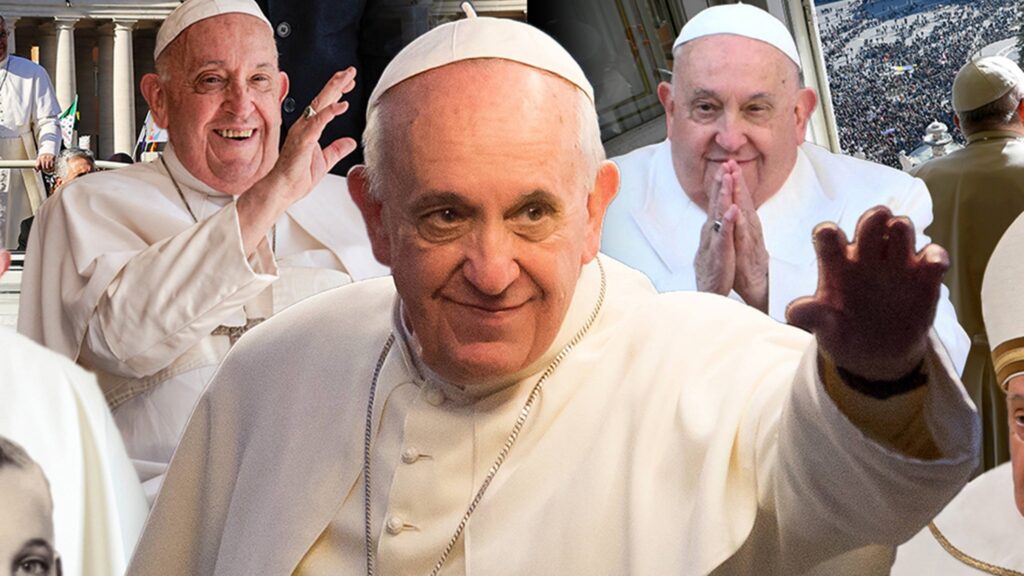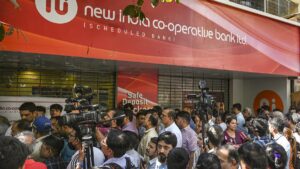
Pope Francis Timeline, Humble Beginnings to World Leader
Pope Francis Life Journey: From Humble Beginnings to Global Leadership
Table of Contents
Pope Francis’s life journey represents one of the most remarkable paths in modern religious history. From his birth as Jorge Mario Bergoglio in Argentina to becoming the first Latin American Pope and the first Jesuit Pope, his story embodies humility, perseverance, and transformative leadership. This comprehensive timeline explores the key moments that shaped his evolution from a chemical technician to one of the most influential global religious leaders of our time.
Early Life and Formative Years
Pope Francis’s life journey began on December 17, 1936, in Buenos Aires, Argentina, where he was born Jorge Mario Bergoglio to Italian immigrant parents. As the eldest of five children in a working-class family, his humble beginnings instilled values that would later define his papal leadership. His father Mario worked as a railway worker, while his mother Regina dedicated herself to raising the family, creating a devout Catholic household that nurtured young Jorge’s faith from an early age.
Bergoglio’s educational path started at a Catholic grade school, providing the foundation for his religious understanding. However, his early career aspirations followed a different direction. After completing his studies and graduating as a chemical technician, he worked briefly in a food laboratory – an experience that gave him insight into ordinary working life and helped shape his later emphasis on the dignity of work and workers’ rights.
Throughout his life, Pope Francis maintained strong connections to his Argentine roots and working-class background. These early experiences significantly influenced his later commitment to social justice, economic equality, and his trademark emphasis on a “poor church for the poor” – themes that would become central to his papacy.
Early Health Challenges
At the pivotal age of 21, Jorge Bergoglio faced a severe health crisis that would impact the remainder of his life journey. A serious bout of pneumonia, complicated by cysts, necessitated the surgical removal of a portion of his right lung. This significant medical challenge occurred just as he was entering adulthood and considering his future path. The experience of serious illness at a young age gave Bergoglio a profound appreciation for life’s fragility and deepened his spiritual perspective.
The partial lung removal would have lasting physical implications, sometimes limiting his energy and endurance throughout his priestly career and papacy. Despite this physical limitation, Bergoglio never allowed his health challenges to impede his service or diminish his commitment to his calling. This early demonstration of resilience became characteristic of his approach to obstacles throughout his life journey.
Path to Priesthood and Jesuit Life
Following his recovery from surgery, Bergoglio experienced what he later described as a profound spiritual calling. At 22, he entered the Diocesan Seminary of Villa Devoto in Buenos Aires, beginning his formal journey toward priesthood. This decision marked a clear divergence from his earlier career path and represented his commitment to dedicating his life to religious service.
Bergoglio’s spiritual journey deepened significantly when he joined the Society of Jesus (the Jesuits) at age 24. The Jesuit order, known for its intellectual rigor, missionary work, and commitment to education, provided a framework that would profoundly shape his theological understanding and approach to ministry. His novitiate began in Chile, where he studied humanities, further broadening his intellectual and cultural horizons.
During this formative period, Bergoglio continued his education, studying theology and philosophy. He taught literature and psychology at Jesuit schools, developing the communication and teaching skills that would later serve him well as a global religious leader. His ordination as a priest in 1969, at age 33, culminated years of preparation and marked the beginning of his formal religious service.
Bergoglio took his final vows as a Jesuit, solidifying his permanent commitment to the order and its values. Within the same year, he was appointed Provincial Superior of the Jesuits in Argentina, a significant leadership position that thrust him into administrative responsibilities at the relatively young age of 36. This role tested and developed his leadership abilities during a politically tumultuous period in Argentina’s history.
Bergoglio’s Jesuit formation instilled in him specific values that would later characterize his approach as Pope Francis: intellectual openness, commitment to “finding God in all things,” concern for the marginalized, and a leadership style focused on discernment rather than rigid authority. His experiences living under the Argentine military dictatorship during this period also shaped his strong convictions about human rights and political freedom.
Rise in Church Leadership
Following his tenure as Provincial Superior, Bergoglio continued to serve in various capacities within the Jesuit order and the broader Church. His reputation for humility, intellectual depth, and commitment to social justice grew steadily, even as he maintained a relatively low public profile compared to some of his contemporaries in Church leadership.
Pope John Paul II appointed Bergoglio as Auxiliary Bishop of Buenos Aires, marking his formal entry into the Church’s episcopal hierarchy. With this appointment came his episcopal consecration, where he selected his episcopal motto: “Miserando atque eligendo” (“By having mercy and by choosing”), a phrase that reflected his understanding of his own calling and would later characterize his approach to the papacy.
Following the death of Cardinal Antonio Quarracino, Bergoglio succeeded him as Archbishop of Buenos Aires. In this influential position, he became known for his simple lifestyle, choosing to live in a small apartment rather than the archbishop’s residence, using public transportation instead of a chauffeured limousine, and cooking his own meals – practices that foreshadowed the distinctive simplicity he would later bring to the papacy.
Pope John Paul II elevated Archbishop Bergoglio to the rank of Cardinal, recognizing his growing influence in the Church and bringing him into the college of cardinals who would eventually elect the pope. As Cardinal Bergoglio, he continued his advocacy for the poor and his practice of humble living, even as his global prominence increased. During this period, he became increasingly involved in the Church’s central governance while maintaining his focus on pastoral care and social justice in Argentina.
| Year | Position | Significance in Life Journey |
|---|---|---|
| 1992 | Auxiliary Bishop of Buenos Aires | First episcopal appointment, entering Church hierarchy |
| 1998 | Archbishop of Buenos Aires | Major leadership position in Argentina’s capital |
| 2001 | Cardinal | Joined the College of Cardinals, became papal elector |
| 2005 | Cardinal (Papal Conclave) | Emerged as runner-up in papal election |
Following the death of Pope John Paul II, Cardinal Bergoglio participated in the conclave that would elect a new pope. According to later reports, he emerged as the main challenger to Cardinal Joseph Ratzinger (who became Pope Benedict XVI), reportedly receiving the second-highest vote count in several ballots. His strong showing in this conclave indicated the substantial respect he had earned among his fellow cardinals, despite his relatively low international profile at the time.
Historic Papal Election
In a move that shocked the Catholic world, Pope Benedict XVI announced his resignation due to declining health – the first voluntary papal resignation since Gregory XII in 1415. This unprecedented modern resignation created the extraordinary circumstance of a papal conclave being called while the previous pope was still living, adding historical significance to the transition that would follow.
On the second day of the conclave and after five ballots, Cardinal Bergoglio was elected pope. He chose the name Francis in honor of Saint Francis of Assisi, becoming the first pope to take this name. His election was historic for multiple reasons: he became the first pope from the Americas, the first from the Southern Hemisphere, the first Jesuit pope, and the first non-European pope in nearly 1,300 years.
Historical Significance of Pope Francis’s Election
- First pope from Latin America, shifting the Church’s center of gravity toward the Global South where Catholic populations were growing
- First Jesuit pope, bringing the distinct spirituality and intellectual tradition of the Society of Jesus to the papacy
- First to take the name Francis, signaling his commitment to the poor, simplicity, and environmental stewardship
- Elected at a time of significant challenges for the Church, including declining membership in traditional strongholds and ongoing abuse scandals
- His election represented a shift toward a more pastoral approach to Church leadership
Papacy Highlights and Reforms
Pope Francis’s papacy introduced significant shifts in tone, emphasis, and approach to Church leadership. While maintaining doctrinal continuity with his predecessors, he brought a distinctive pastoral style that emphasized mercy, inclusion, and encounter. His papacy focused on several key areas that reflected his life journey and the values formed throughout his earlier experiences.
His reform agenda targeted the Vatican’s financial structures, increasing transparency and accountability while addressing long-standing concerns about corruption. He restructured the Curia (the Church’s central administration), streamlining operations and attempting to reduce bureaucracy. Most significantly, he emphasized decentralization, advocating for greater authority for local bishops’ conferences and a more “synodal” approach to Church governance.
Pope Francis consistently emphasized what he called a “culture of encounter,” encouraging Catholics to engage directly with those different from themselves. This approach reflected his own life journey, from his experiences in multi-cultural Buenos Aires to his interfaith dialogues as pope. His emphasis on personal encounter rather than abstract principle represented a distinctive aspect of his leadership style.
Distinctive Leadership Style
Throughout his papacy, Pope Francis maintained many of the humble practices that had characterized his earlier ministry. His decision to reside in the Vatican guest house (Casa Santa Marta) rather than the traditional papal apartments demonstrated his preference for community living over isolation. His simpler vestments, more accessible language, and spontaneous gestures represented a conscious departure from some of the more formal aspects of papal tradition.
Pope Francis’s leadership style was characterized by direct communication. His daily homilies, often delivered without a formal text, reached millions through social media and demonstrated his gift for expressing complex theological concepts in accessible language. His linguistic abilities – speaking Spanish, Italian, German, English, French, Portuguese, and Latin – enabled him to connect directly with Catholics and others worldwide without relying heavily on translators.
The pope’s commitment to accessibility extended to his approach to controversial issues. Rather than leading with doctrinal pronouncements, he often emphasized pastoral discernment and mercy. His famous response to a question about gay Catholics – “Who am I to judge?” – exemplified this approach, emphasizing accompaniment over condemnation while maintaining the Church’s traditional teachings.
Final Days and Passing
In his final years, Pope Francis continued his active leadership despite increasing health challenges related to his lifelong respiratory issues and advancing age. His mobility became more limited due to knee problems, occasionally requiring him to use a wheelchair, but his intellectual engagement and work ethic remained largely undiminished.
As Easter 2025 approached, Pope Francis developed bronchitis, which quickly progressed to pneumonia affecting both lungs. His compromised respiratory system, dating back to the partial lung removal in his youth, made this infection particularly serious. Despite initial treatments, his condition deteriorated rapidly.
On Easter Monday, at age 88, Pope Francis suffered a stroke that resulted in a coma, followed by cardiac arrest. He passed away peacefully at his residence in the Vatican, completing his remarkable life journey that had taken him from the streets of Buenos Aires to leadership of the global Catholic Church with its 1.3 billion members worldwide.
Lasting Legacy and Global Impact
Pope Francis’s life journey, from humble beginnings to global religious leadership, left an indelible mark on both the Catholic Church and the broader world. His emphasis on mercy, inclusion, and care for the marginalized shifted the Church’s public focus and reinvigorated its social justice tradition. His environmental encyclical “Laudato Si'” established him as a significant voice in global ecological concerns, connecting care for the environment with care for the poor.
His reform efforts within the Vatican, while meeting varying degrees of success, represented the most significant attempt to restructure Church governance in recent history. His appointments diversified the College of Cardinals both geographically and ideologically, ensuring that his influence would continue beyond his lifetime through the leaders he elevated.
Key Elements of Pope Francis’s Legacy
- Revitalized the Church’s commitment to the poor and marginalized
- Established a more accessible and pastoral model of papal leadership
- Positioned the Catholic Church as a leading voice on environmental issues
- Advanced interfaith dialogue, particularly with Islam and Judaism
- Initiated significant reforms in Vatican financial and administrative structures
- Encouraged a more decentralized, synodal approach to Church governance
- Maintained global moral authority even in an increasingly secular world
The remarkable life journey of Pope Francis – from his birth as Jorge Mario Bergoglio to his death as the leader of the world’s largest religious organization – embodied many of the qualities he promoted: humility, mercy, resilience, and commitment to service. His path from chemical technician to pope, from the peripheries of the global Church to its center, and from traditional Catholic practices to innovative approaches to ministry, represents one of the most consequential religious leadership narratives of the modern era.







